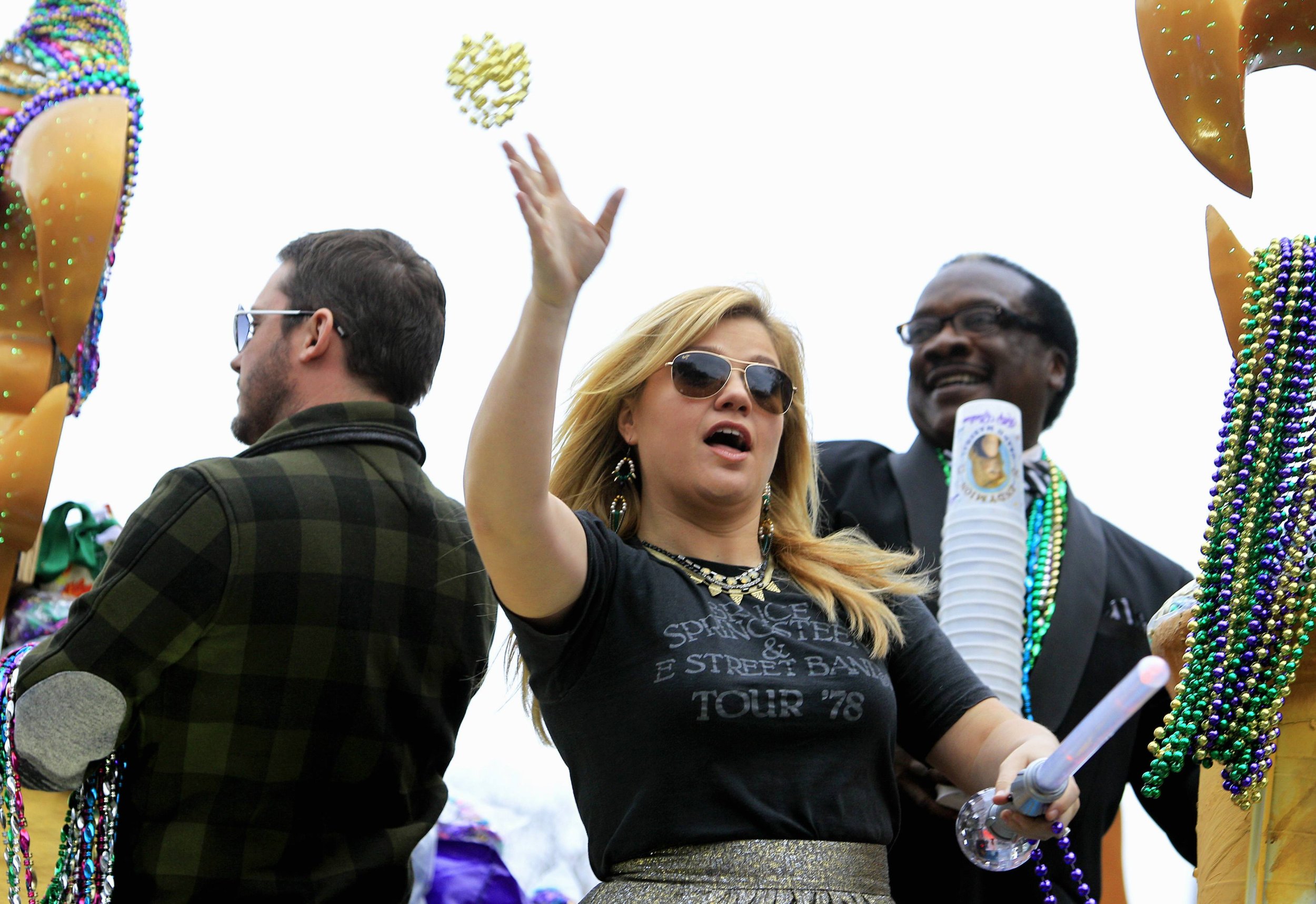Mardi Gras 2013: Thousands Attend Parades Flaunting 330-Foot Long Super Float, Kelly Clarkson's Concert At Superdome [PHOTOS]
Thousands of revelers thronged colorful and exuberant parades in New Orleans this weekend in the countdown to the Mardi Gras 2013 carnival. Mardi Gras, which falls this Tuesday, is the day before the Ash Wednesday, the beginning of Lent.
The carnival is a season of revelry, parades, balls, eating king cake, spread roughly over the period from Three Kings Day to Fat Tuesday. Mardi Gras or Carnival has its roots in pagan culture and spring fertility rites dating back thousands of years, blended with Christian practices.
Millions throng the congested streets the French Quarter in New Orleans and other centers of celebrations in Alabama and Louisiana during the carnival days. Several parades with huge floats are a major attraction in the carnival and people throw beads, masks and small toys to the spectators. Parades are held each day of the carnival but the largest and best are reserved for the last five days before the Mardi Gras.
Krewes, the groups that hold the parades and balls, compete with each other in rolling the biggest and most splendid floats and celebrations. Revelers, dancers, merrymakers and musicians stroll in colorful and mythical costumes and masks tossing the colorful beads and other ‘throws’ in the parade.
Mardi Gras 2013 celebrations in New Orleans Saturday saw one of the biggest floats ever. The 330-foot long super float built by the Krewe of Endymion held more than 200 riders in eight sections.
The super spectacle claimed to be the largest in history had to be separated into two as it could not negotiate a turn during its parade Saturday. The $1.2 million float was rejoined after taking the turn and ended its journey at the Superdome, where "American Idol" alum Kelly Clarkson performed at the first major concert of the Mardi Gras eve. It was the first major event at the Superdome since the Super Bowl power blackout.
Kelly Clarkson was the celebrity grand marshal of the Krewe of Endymion.














© Copyright IBTimes 2025. All rights reserved.






















